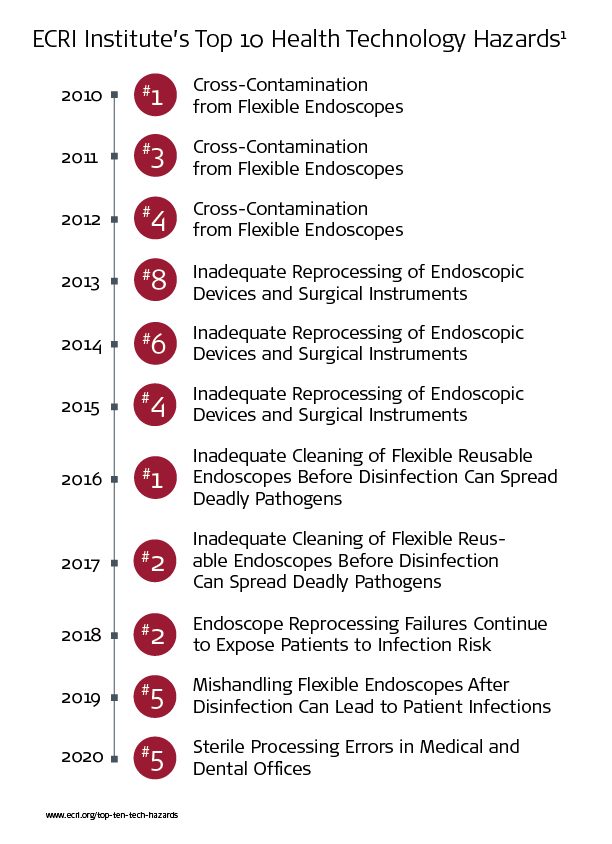
Each year, the ECRI Institute identifies 10 technology health hazards to help healthcare facilities identify and address these risks.
And for the first time in a decade, the annual report did not include the threat of patient cross-contamination from medical devices such as flexible endoscopes.
COVID-19 dominates the 2021 selections, now in their 14th year, with a technology management challenge “unique to this time” topping the list: wariness of medical devices granted emergency use authorization during the novel coronavirus pandemic.
In recognition of Patient Safety Awareness Week – March 14 to March 20 – we decided to also dive into past lists. This includes the risks, while rare, to patient safety from device-related cross-contamination that have dominated those compilations.
Patient Safety Awareness Week is an Institute for Healthcare Improvement (IHI) initiative that seeks to highlight different ways to avoid preventable patient harm.
Approximately 40 percent of patients experience harm in ambulatory and primary care settings, according to IHI research. It’s estimated that 80 percent of these harms are preventable. The IHI also estimates up to 400,000 deaths occur in the U.S. each year due to preventable errors.
As with all the patient safety threats the ECRI Institute identifies, there are actions that healthcare providers can take to prevent or minimize risks posed by medical technology. Flexible endoscopes made the report every year from 2010 to 2020, with cross-contamination threats topping their list in 2010 and 2016.
Flexible endoscopes are notoriously difficult to clean and disinfect, due to their long, narrow working channels and delicate nature. Duodenoscopes especially pose unique disinfection challenges because of their elevator mechanism on the distal end.
Reprocessing is complex and requires strict adherence to be successful. Inadequate reprocessing can leave flexible endoscopes contaminated with dangerous microorganisms and threaten patient safety.
Several factors contribute to failed endoscope disinfection between uses, including challenging work conditions for reprocessing personnel and time constraints in the reprocessing suite. Contaminated cleaning tools, including automated endoscope reprocessors, have also contributed to reprocessing failure.
Proper endoscope handling during and after reprocessing also plays a role. Technicians must don fresh personal protective equipment (PPE) when moving scopes between various reprocessing stages. Biofilm can also form on endoscope channels that are not dried completely.
In 2019, the ECRI Institute recognized the mishandling of endoscopes post-reprocessing as the No. 5 health technology hazard. In the 10 years endoscopes were on the list, this was the first time its focus shifted from the threat posed by improperly cleaning endoscopes to the risk of recontamination due to improper handling after a scope has been cleaned.
Last year, “sterile processing errors in medical and dental offices” ranked No. 3 on the health technology hazards list.
“During [infection prevention control] consultations in these settings, ECRI Institute has observed numerous oversights and improper actions associated with sterilization processes,” according to the 2020 report. “While the prevalence of such failures is unknown, the potential exists for this to be an insidious, widespread patient safety risk.”



